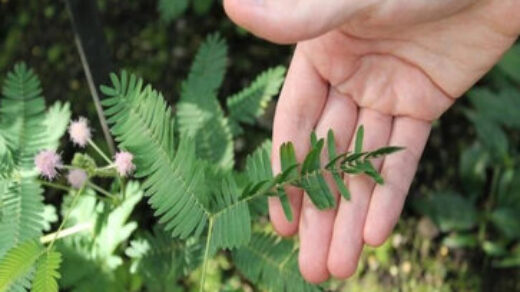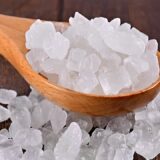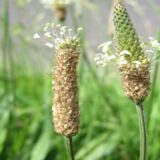How To Detox Your Body Through Ayurveda?
What Is Detoxification? Detoxification precisely means building the body “free of toxins.”Detoxification is the method of clearing toxins from the body or neutralizing or revolutionizing them, and clearing extra mucous secretion and clogging.
Many of these toxins come from our diet, medicine use, and environmental exposure, both acute and lasting. Internally, fats, particularly oxidized fats and cholesterin, free radicals, and other irritating particles act as toxins.
Poor digestion, colon sluggishness, and dysfunction decreased liver function, and poor elimination through the kidneys, respiratory tract, and skin all add to increased toxicity.
Detoxification aids in destroying environmental and dietetic toxins from our system. Detoxification requires dietetic and lifestyle changes, that reduce the intake of toxins and enhance elimination.
Prevention of chemicals, from food or unlike sources, refined food, sugar, caffeine, alcohol, tobacco, and various drugs helps minimize the toxin load. Those lifestyle changes are a straight result of alternatives you make in your life.
Different Types Of Detoxification In Ayurveda
According to Ayurveda, digestion is the key to asserting health and longevity. Strong digestion means a strong and healthy body. Digestion is an image of your mental-emotional-physical stage of balance. Poor dietetic habits, stress, and environmental pollutions can lower your digestion.
A weak digestion effect on the gathering of toxins (which is known as ama in Ayurveda), which in turn cause disease and aging. Characters of poor digestion and toxins can result in tiredness, lack of mental clarity, weight gain, and chronic infections.
Ayurvedic detox diets emphasize decreasing the intake of potentially harmful chemicals and increasing foods that aid the body in cleansing. When toxins are cleared from the body, the body gains higher energy levels that improve digestion and concentration.
1. Fasting
Fasting is the for the most part and common form of detoxification plan. By way of fast is to avoid all ingestion with the exception of water or juice. Short fasts to place the little threat to the human body.
A fast will enable your body the opportunity to flush out toxins, accumulated fat, and food, particularly from the digestive system.
It must be noted that in prolonged fasting the body starts to break down the organ systems for energy. Anything longer than three days have to only be done under the supervision of a trained doctor.
2. Detox Tea
In this detoxification plan fasting with an herbal drink is taken during the day. Herbal drink recipe can be prepared by taking 8 cups of water, cumin, and coriander powder both four teaspoons, eight cardamom pods.
Also add four teaspoons of crushed fennel seeds, two pinches of black pepper,1/2 teaspoon of ginger powder (three slices of fresh ginger also can be used), Mix all ingredients in a frying pan and bring to a boil.
Simmer for 5 minutes, then take off from heat and keep covered for another 15-20 minutes. Strain through a sieve and drink it warm throughout the day.
3. Detoxification Diet
A purification diet is a simplified system of eating. Using raw and minimally cooked foods while avoiding meat, dairy, fat, sugar, and alcohol this system is sustainable for people needing more energy to manage their daily lifestyles.
With the consumption of the limited foodstuff on an elimination diet, it’s important to get as much relaxation as possible.
This type of detoxification provides the most calories and nutrients.allowing the digestive system to purify itself with the concentration of high fiber foods and limited stress load from high water content foods.
4. Detox Food
In this detoxification plan fasting with minimally cooked foods liked Khichadi which is simple, easily digested that can prepare the body for cleansing. It is as well appropriate for advent off of a cleanse.
Khichadi recipe can be made by taking,1 part brown basmati rice, soaked for at least 1/2 hour and drained,1 part mung beans, soaked in water for at least 1 hour and drained,1 part vegetables, such as green beans, carrots, spinach, and other green vegetables with 6 parts of water
Now heat ghee (clarified butter) if not available you can also use olive oil in a pan over moderate heat. Add cumin or coriander seeds. Then add 1 medium onion, finely chopped, chopped ginger, and garlic, and saute until golden brown. add 1 teaspoon of turmeric powder, with 1/4 tsp. of black pepper powder, and 1 bay leaf. Add mung beans, water, vegetables, and rice.
Cook for about an hour. When the beans are completely soft, add a pinch of salt and serve the dish with little ghee, chopped fresh coriander leaves.
5. Detoxification Therapy Panchakarma
The Ayurveda Panchakarma Treatment well known for its detoxification result in the program begins with Purvakarma. Purvakarma is internal oelation, external oelation, and steam(known as Swedana ).
1. Purvakarma
Purvakarma therapies are formed to relax the body and mind, enhance the flow of energy by opening the srotas (lines of circulation), and organize the body to remove toxins (known as ama in Ayurveda).
After four to fourteen days of this internal Purva karma, the doshas usually ripen in their positions of origin in the gastrointestinal tract, and ama is ready to be flushed from the system by the relevant panchakarma treatment.
2. Internal Purva karma
Internal Purva karma is the oral consumption of medicated ghee preparations. This is completed as a therapeutic procedure as well as an introductory process for the panchakarma removal of toxins.
In this treatment, heavily medicated ghee is taken internally in proportionally increasing quantity for a time of 2 to six days and generally performed before the external oleation therapy.
3. External Purvakarma
In External Purvakarma Herbal oil massages (two or four-handed like Abhyanga, Shirodhara, etc.) are carried out to cause external and deep tissues to be supple.
This technique nourishes the nervous system, and fixes loosen and ease the removal of gathered ama (toxins) from the body. These nurturing therapies can also be extremely relaxing.
4. Swedana
Swedana is the therapeutic implementation of steam to motive sweating. This procedure loosens the toxins and is hastened by the addition of herbal mixtures to the steam.
Herbalized steam enlarges the srotas (channels of circulation), moreover, loosening and removing pollutions through the skin and gastrointestinal tract. After Sweden, an herbal powder such as sandalwood rose or vaca powder is once in a while rubbed briskly on the skin.
This Detox process improves circulation, ejects toxins from the skin, and helps to calm down the imbalanced doshas. At the end of the session, you may shower and rest.

























